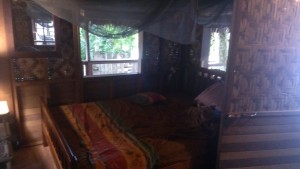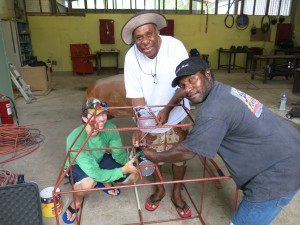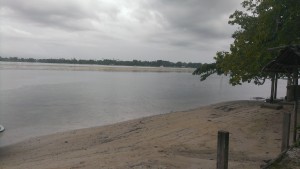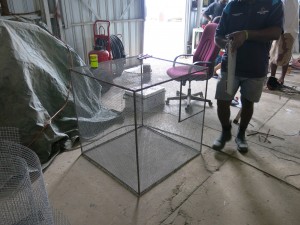Searching for the Fuzzy Nautilus-Blog from Dr. Greg Barord
Part 2 of the search for the Fuzzy Nautilus with Dr. Barord and his team mates:
After arriving at our hotel in Kavieng at about 10:00PM local time, we had our first scary moment. Between our team, we were traveling with about 15 pieces of luggage. After we got settled into our rooms and starting unpacking and preparing gear, we realized that we were missing a bag. So, the frantic search began of checking everyone’s rooms, checking some rooms of other guests that may have mistakenly grabbed the bag, and going over all the scenarios of where the bag could have ended up. At a certain point, as late as it was, there was nothing more to do. So, all we could do was setup our mosquito nets over the bed and try to sleep.
Morning came. With a few calls and a trip to the airport, we found the bag! WHEW!!!

Bed in Kavieng with mosquito net above it. To sleep, you need to tuck the mosquito net under the mattress to keep any mosquitoes from biting you while sleeping. It worked well! (Photo by Gregory Jeff Barord)
Probably the most important thing to remember every morning in Papua New Guinea is to take your antimalarial pill. This area has some of the highest risks of contracting malaria and even forgetting to take your pill one day can leave you susceptible. I learned the hard way that it’s also important to always, always eat some food when taking the pill. If you don’t, then you might be a bit miserable (actually a lot miserable) out on a boat all day. Lesson learned.
Now it’s down to business. We hopped on a small boat and headed into town to pick up the many, many big and little supplies that we would need for the next few weeks. Then it was time to make the final preparations on our gear. Thankfully, our colleagues in Papua New Guinea had already prepared much of the gear ahead of time.
The first things we built were steel traps. We baited these with either chicken or tuna (yes, chicken appears to be a nautilus favorite) to catch nautiluses so that we could collect important information such as size, age, maturity, and sex. We also photographed each nautilus and collected non-lethal genetic tissue samples to analyze later on. The genetic samples help us understand how nautiluses are related to one another.

Making final preparations on our baited remote underwater video systems, called BRUVS. (Photo by Richard Hamilton)
We also built baited remote underwater video systems (BRUVS). We first had to weld together a strong, steel frame that we could attach an underwater video camera and light to. The BRUVS allow us a glimpse into the deep sea habitat of nautiluses and enable us to count how many nautiluses are attracted to our bait. We’ve done this before in the Philippines, Australia, Fiji, and American Samoa with great success. An exciting aspect of using BRUVS is that you never really know what will show up in the video. The deep sea nautilus habitat is an area seldom studied and anything can happen.
Anything has happened…
After getting the gear ready, it’s time to load it on a boat and start collecting data.
Stay tuned for more of this amazing adventure! We are very excited to have Dr. Greg Barord at Central Campus! And we look forward to more of his adventures seeking the Fuzzy Nautilus!



